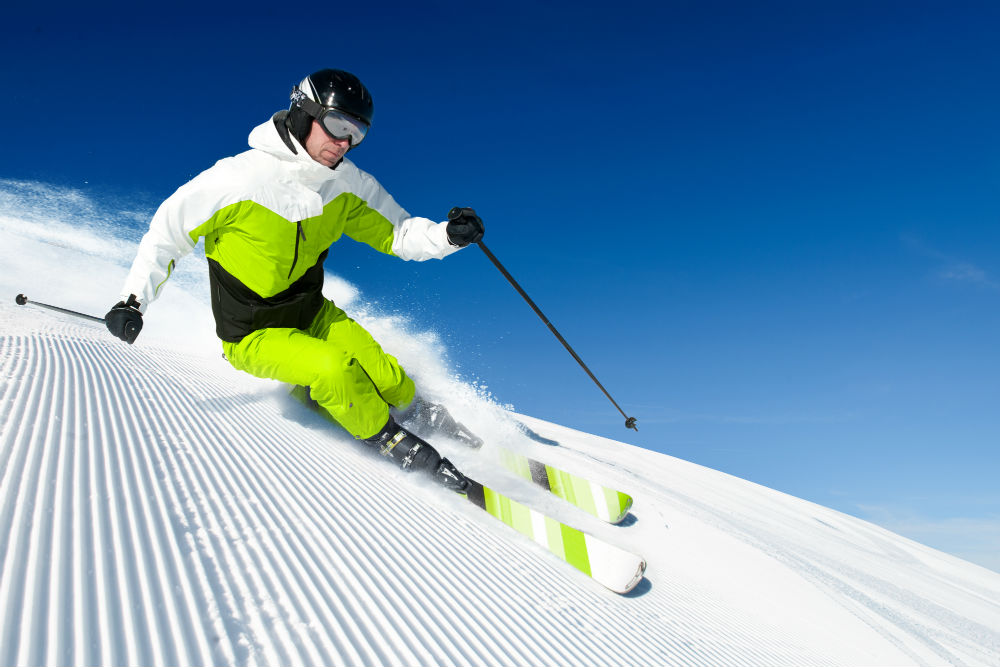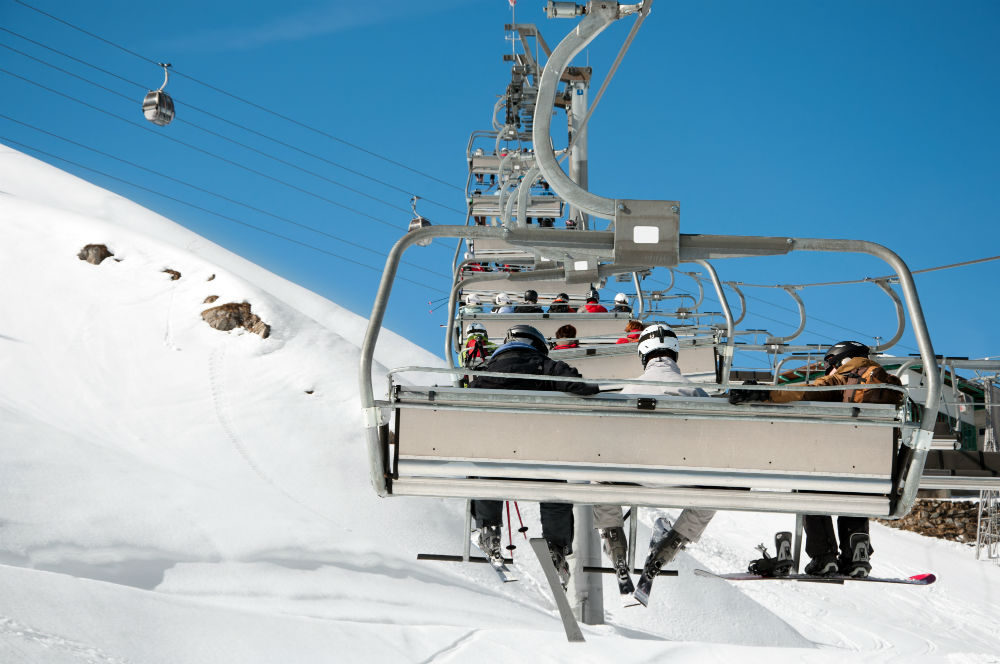
Skiing – a sport loved by many, enticing millions of skiers to the slopes year after year. Yet there are also a number of problems skiers can face, which can turn many a downhill run into a nasty experience. In this article, we take a look at what these problems are and which ones can be avoided.
Ski boots
Anyone who skis will know what’s coming. Restricted blood flow due to the hard plastic used in ski boots. Toes going numb. Painful pressure marks that form. Or even the risk of blisters and chafing if your socks aren’t quite sitting right on your feet. These are all problems skiers face, and beginners also have other problems with walking and standing, as many people find walking in ski boots far from comfortable.
Some of these problems can be avoided, however – at least to an extent. It’s definitely important to wear ski boots that have been customized to fit your feet. These days, heat molding is used to shape the inner boots and provide a custom fit. If you don’t want to have your ski boots customized in a specialist shop, insoles can also be a good idea. When buying insoles, it’s important to make sure they match the shape of your foot, preventing potential chafing and painful pressure marks. However, here at pjuractive we’ve got a completely different solution for chafing and blisters. More on that in a minute. When it comes to that odd feeling of walking in ski boots, there’s very little you can do. It will get better after a while, though – promise.
Skiwear
Don’t wear enough and you freeze, wear too much and you sweat – beginners especially often find they don’t yet know how exactly to dress for the perfect skiing holiday. And even experienced skiers can be wide of the mark from time to time, despite all their experience. Whether it’s choosing the fashionable ski jacket over the functional one or forgetting to make sure their skiwear is waterproof, windproof, and breathable. To limit the problems that can come with skiwear, skiers should therefore bear the following tips in mind when choosing clothing:
- The layering principle isn’t just recommended for skiwear. It’s a good idea to wear several layers so you can take some clothes off after strenuous physical activity or at midday when it gets a little warmer.
- Start your layers with thermal underwear. Unfortunately, it’s something many people underestimate. Yet not only is thermal underwear quick to dry, it also regulates moisture effectively. It’s definitely something to get yourself when you’re going skiing.
- Make sure you have enough room to move! When you’re skiing, it’s not just important to be comfortably warm. It’s vital to make sure you can move well, too.
- Socks, gloves, and ski helmet – items that often aren’t taken into account when buying clothes for a skiing holiday. When it comes to your ski socks, make sure they fit well. Otherwise you run the risk of rubbing, which can lead to chafing. With gloves, it’s essential to make sure they keep you warm but also that they are waterproof. Your ski helmet should be a perfect fit to guarantee the best protection.
The problem of chafing in skiers
Chafing occurs when skin rubs against skin or clothing rubs against skin. It happens time and again when you make the same movement repeatedly. The result is irritated skin, which can lead to blisters and sore patches. Clothing seams in particular and even patches of skin that rub against one another are affected by it. So it’s no wonder that skiers aren’t immune from this problem either. Chafing and blisters are a common problem among skiers, especially because of the amount of clothing worn and the ski boots, which offer plenty of opportunities for rubbing.
pjuractive has the solution. pjuractive 2SKIN invisible anti-chafing gel is easy to apply to the appropriate areas and protects against rubbing from the word go. So you can stop chafing and blisters before they even appear. 2SKIN is waterproof and sweat resistant, is safe for functional sports textiles, and stays smooth – even at minus temperatures.
Sore muscles after skiing
Usually, even experienced skiers will underestimate the muscle soreness they have to suffer the day after starting skiing again. And it’s not just the thighs that ache but the upper body, too – and virtually every other muscle in your body, or that’s how it feels.
One thing that can help combat that awful feeling of waking up sore after the first day of skiing is doing ski exercises. These include exercises such as squats, side plank, the so-called mountain climber and even the swimmer. Preparing for the slopes by doing these exercises can prevent sore muscles. And it may also be a good idea not to overdo it immediately on the first day, getting back on your skis slowly instead.

And a few other things that can happen…
Besides these problems, there are also a few other things that should be all too familiar to skiers. Such as trying to pick up your skis or snowboard without gloves on every now and then. However, many a skier has cut themselves doing this, as they have very sharp edges. So always wear gloves if you need to be able to lift your skis or your snowboard! The following problems are also common on the slopes:
- Skiers who fidget so much when transporting their skis that you have to watch out to make sure you’re not affected by them. And the ones who suddenly turn around without warning, with their skis or snowboard on their shoulders, are dangerous too. So watch out!
- Chair lifts have a few risks associated with them, too. Either it bangs against your calves as you get on or you get a bit squashed under the bar.
- Nasty bruises. It’s not just inexperienced skiers who fall over and get bruises. Snowboarders in particular are constantly falling on their butts and know just how painful it is when it’s covered in bruises.
Despite there being a number of problems that skiers have to contend with, thousands of people hit the slopes time and again. If you haven’t tried your hand at skiing before, in our next article we’ll show that you’re never too old to learn to ski ? So have fun on the slopes!